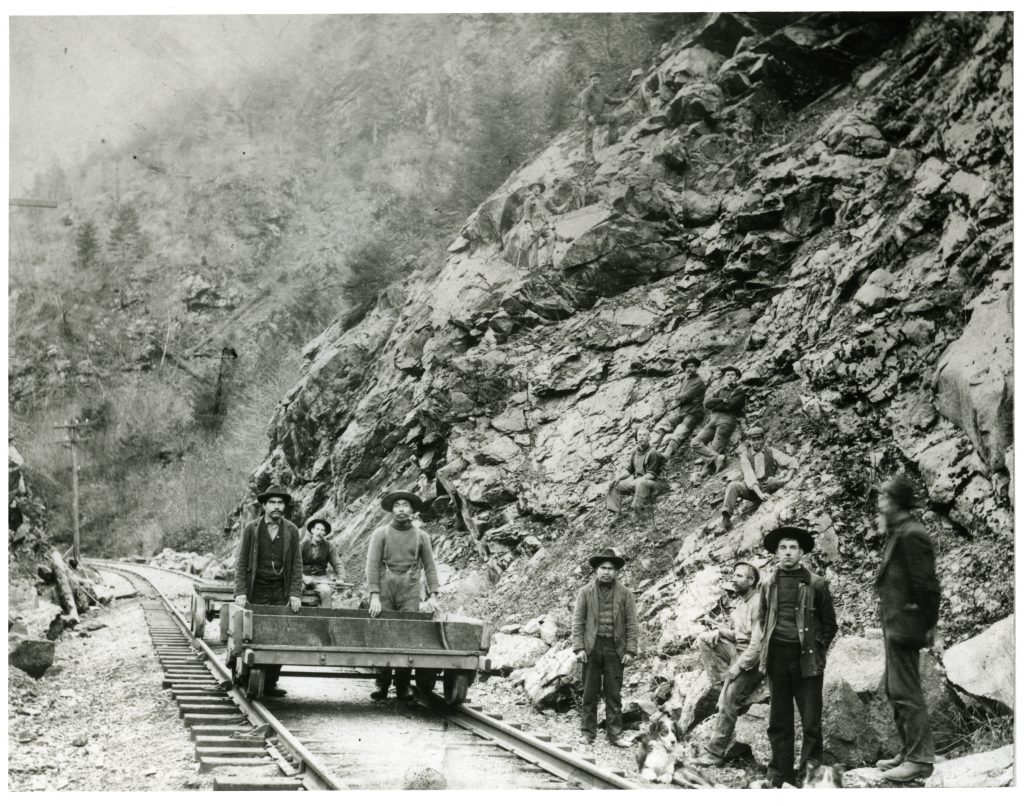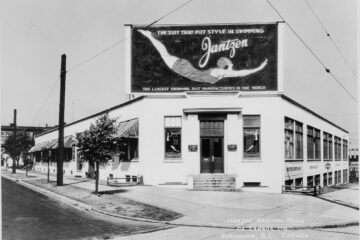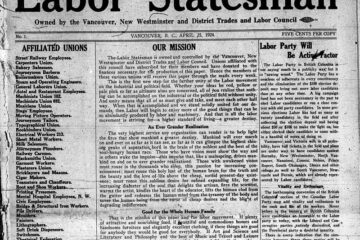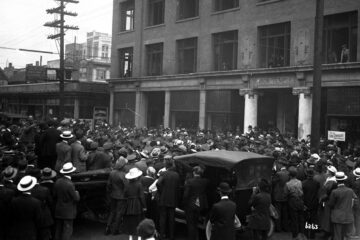Wong Hau-Hon, Railway Worker

(Excerpt from On the Line: A History of the British Columbia Labour Movement, by Rod Mickleburgh [2018])
The thousands of Chinese immigrants who endured so much helping to unite Canada by rail left little record of their ordeal. But we do have one personal account written by former railway worker Wong Hau-Hon in 1926. Following are some excerpts from his account:
“I first came to Canada in 1882,” he wrote. “We debarked at Westminster. I set out on foot with about four hundred Chinese to join the railroad construction crews at Yale. We had worked only two days when the white foreman ordered our gang to move to North Bend. It rained all day. We were wet and cold. Some arrivals, unaccustomed to the Canadian climate, sickened and died, as they rested beneath the trees or lay on the ground. When I saw this, I felt miserable and sad.”
“At China Bar, many Chinese had died from an epidemic. As there were no coffins, bodies were stuffed into rock crevices or beneath trees to await burial. Some were buried on the spot in boxes made of crude planks. Some were buried wrapped only in blankets or grass mats. The sight of these new graves dotting the landscape sent chills up and down my spine.”
“We were ordered to Hope. The work there was very dangerous. On one occasion, a huge rock had to be removed by blasting. More than three hundred barrels of explosives were used. When blasting, the workers usually hid away in a safe place. But there was one, Leung, who had gone behind another hill, where he thought he would be safe. He lit his pipe while waiting for the blasting to proceed. Unexpectedly, a huge boulder thrown up by the blast landed on the hillside where Leung was sitting. It rolled down the slope, hitting him in the back. We heard a piercing shriek. By the time we reached him, Leung was dead.”
“Another incident occurred west of Yale. Twenty dynamite charges were ignited to blast a rock cave, but only eighteen went off. The white foreman, thinking all the dynamite went off, ordered the Chinese workers to enter the cave to resume work. Just at that moment, the last two charges exploded. Chinese bodies flew from the cave as if shot from a cannon. Blood and flesh were mixed in a horrible mess. About ten or twenty workers were killed.”
“So many Chinese labourers died from epidemics and accidents. I am now sixty-two and have experienced much hardship and difficulties in my life. I am proud of the fact that we Chinese contributed much to the development of transportation in Canada. Yet now the government is enforcing discriminatory immigration regulations against us. The Canadian people must surely have short memories!”


